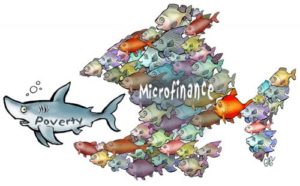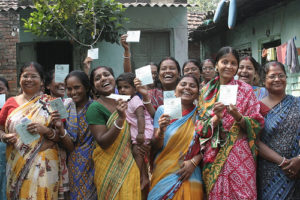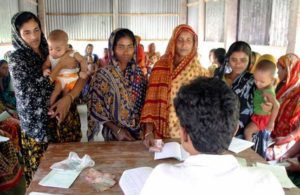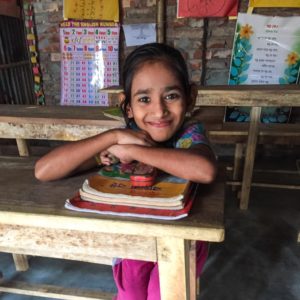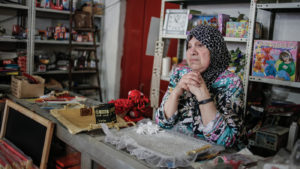Microfinance was born in the early 1980s when an economist named Muhammad Yunus came across women in poverty from the villages of Bangladesh. In face of the widespread famine and poverty, some of these women and their families were controlled by the loan sharks, and had no other resource to turn to because traditional banks considered them not creditworthy. Muhammad Yunus repaid the women’s debt and helped them get loans from the bank as a guarantor. Soon, working with the poor made him realize that lending money to the disadvantaged is a great business opportunity for that they were trustworthy, hardworking people. He then created Grameen Bank, what we consider a pioneering model of social enterprise, to help the poor break the cycle of poverty.
Why has the Grameen Bank succeeded in reaching the poor, while traditional banks have not? The most prominent reason is that borrowers do not need collateral to get a loan. This policy allows access for the disadvantaged to get loans more easily to support their small businesses and livelihood. These loans are typically made in very small amounts, averaging at $200 with an interest rate below 20%, hence the “micro” in Microfinance. Grameen Bank is also different from traditional banks in that it has a financially self-reliant model. Yunus explained his bank’s business model in an article published in The Round Table: Grameen has funded 90 percent of its loans with interest income and deposits collected, aligning the interests of its new borrowers and depositor-shareholders since 1995. Essentially, the bank encourages all borrowers to become savers, so that their local capital can be converted into new loans to others.
The most fascinating fact about Grameen Bank’s operation, however, is that 97% of the borrowers are women. It is a brilliant business strategy because women statistically have a much higher loan repayment rate than male. Yunus have recognized this, and made women his target client partially for this reason. In an interview with The Guardian, Yunus said that he expanded the program into the US and established 19 branches in 11 cities, including eight in New York. “We have nearly 100,000 borrowers there now and 100% women. Not a single man.” However, giving microloans to women isn’t just good for business, it accomplishes so much more.
In rural Bangladesh, most women are essentially confined to their husband’s family compound, and are in a rather powerless position both socially and economically. Girls are usually married by 16, sometimes as young as 11. Most of the times, there are no medical professionals in attendance when women give birth to children in these areas. Women are expected to keep their eyes down and their voice soft, even at home. It is not considered proper for women to go to the market, or to be seen by men outside their family.
Microfinance serves these women, who are often overlooked in society, and empowers them one small loan at a time. This access to a small amount of capital made it possible for women to buy seeds, chickens or a cow and start and grow their small businesses. Often this allows them to earn enough to provide three meals a day instead of two for their family and their children, of whom 40% are malnourished. It also gave them a bit of cash to pay for medicines if a family member got sick.
Here’s the story of Manjira who, years before, was living in extreme poverty in Bangladesh. She had lost a young son to a sudden illness. She told the reporter at New York Times that her most painful memory was the day before her son died. He asked her for an ice cream that cost one taka (about 2 cents), but she didn’t have the money to give him that. A few years later, she managed to get a small loan through Grameen, and had become a successful seamstress. Now, she is one of the board members of Grameen Bank, along with 3 government representatives and 8 other village women elected by the bank’s more than 8 million members.
Like Manjira, many women in Bangladesh have found means to provide for themselves and their family with the help of microloans. The impact of Microfinance, however, goes far beyond providing women with business opportunities. More importantly, it help increase access to education for the next generation.
Statistically, children living in poverty have a higher chance of missing, dropping out, or not enrolled in schools. This is because the majority of families who live in poverty work in agriculture. The families need the children to be working and productive so their financial needs can be met. Microloans can help ease the financial pressure of these families, which means more opportunities for children to stay in school. This is especially important for families with girls. When girls receive just 8 years of a formal education, they are four times less likely to become married young. This makes these girls more likely to achieve higher level of education and then become a more productive member of the society.
Yunus claimed that part of the reason why he focused on serving female customers is that he wanted to protest the traditional banks that refused to lend money to women. As more and more of these women succeed in building their businesses, Bangladesh and many other developing countries reached by Microfinance firms are now forced to a new look at women’s role in the society. A recent study done by RMIT University has shown that Microfinance has effectively reduced gender inequality in developing countries. The study measured gender inequality using Gender Development-related Index and Gender Inequality Index. These are UN indicators that calculate gender inequality based on measures of differences in factors like health, education, and economic status, as well as living condition and empowerment. The researchers found that in the average developing nation, an increase in Microfinance by around 15% is associated with a decline in gender inequality by about 50%.
Some critics of Microfinance claim that many become overwhelmed by their debt. However, it is important to distinguish the different types of Microfinance organizations. Some institutions in Bangladesh like BRAC have models similar to Grameen and provide services with the goal to combat poverty. Unfortunately, there are also some profit-oriented organizations that use predatory lending and collection practices. Some of these institutions charge up to 200% for interest, and their harsh collection methods had driven some borrowers to commit suicide. This type of Microfinance lenders does their business on the client’s doorstep, meaning that representatives are encouraged to travel to rural villages to make the loans and then come back weekly to collect the payments. Yunus himself is outraged by this kind of Microfinance companies that make profits of the backs of the very poor. Sadly, the Bengali government offer few regulations in this type of predatory business.
Some academics, including Dean Karlan, insist that the success stories of women who received help from Grameen Bank is overrated, and paint an unrealistic picture of the effectiveness of Microfinance. Karlan conducted randomized controlled trials of Microfinance programs in different developing countries, and in each case they compared a randomly selected group of people who had been offered the loans to an otherwise identical group that had not. Their research suggests that Microfinance does not have much effect on improving the level of income of the loan recipients. However, it is worth noting that in some cases the overall income stay unchanged because borrower decrease their work at a wage-paying job as they start to gain more income from their own business, and the assets they own are not counted toward their income.
Aneel Karnani, a professor of strategy in University of Michigan published an article in Stanford Social Innovation Review, in which he agrees with Karlan and argues that despite its noneconomic benefits, Microfinance does not significantly alleviate poverty. He claims that instead of Microfinance, best way to eradicate poverty is to create jobs and to increase worker productivity. Karnani points out that most Microfinance clients are not “micro-entrepreneurs” by choice, and that these borrowers would “gladly take a factory job at reasonable wages if it were available”. On a macroeconomic scale, most people agree that employment is the fundamental link to poverty reduction. However, the problem that the clients face in these rural areas of Bangladesh is precisely the limited opportunities for steady employment at reasonable wages. Within the status quo, Microfinance is still the best opportunity for people who seek temporary financial relive and are hoping to kick start their small business.
Granted, Yunus’ hopes for Microfinance had always been rather grandiose. Poverty is a complex issue, and Microfinance isn’t a “silver bullet” that can magically solve it. With that said, well-intended Microfinance institutions remain one of the best tools available to developing countries to alleviate poverty. A 2015 report from advocacy organization Microcredit Summit Campaign claims that between 1990 and 2008, Microfinance has lifted 10 million people out of poverty in Bangladesh alone. However, there’s no denying that Microfinance has now become a worldwide movement. By 2013, some 3,098 microfinance institutions had reached over 211 million clients worldwide, just under half of whom were living in extreme poverty.
Clearly, more Microfinance in developing nations is good news for women. There is an immeasurable effect that occurs when women are empowered to do something in their society that they weren’t normally allowed to. As women build up their business, overall consumption increases and its benefits also extend outward to the entire community benefits, including those who are participating in the program. However, it is important to keep in mind that Microfinance does not automatically empower women. Governments and international organizations in developing nations should tighten regulation over Microfinance institutions and be sensitive to the country-specific and cultural factors that play a key role in determining how Microfinance interacts with the local community.
